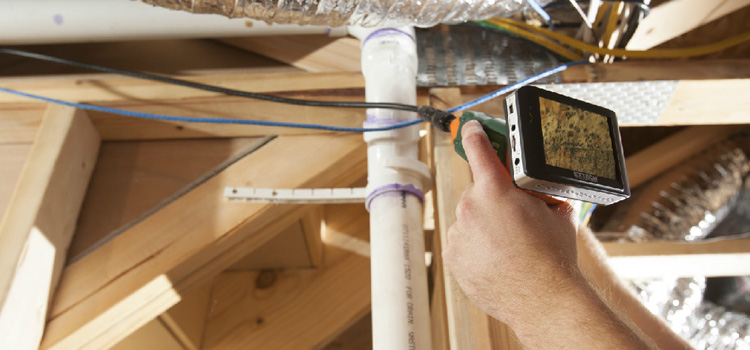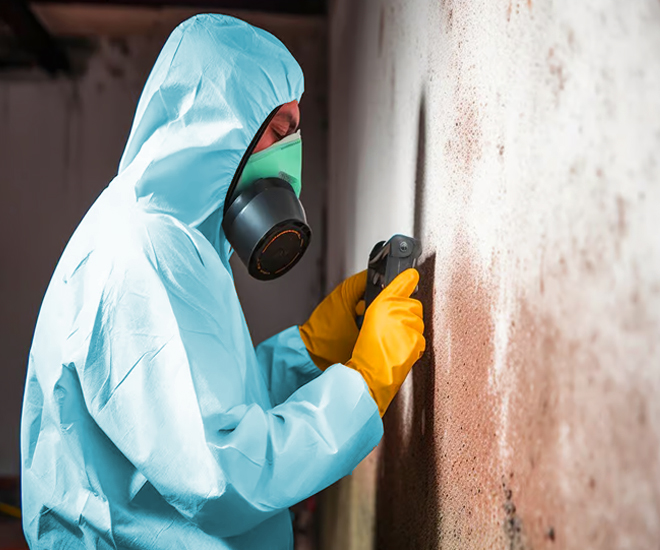Accessing Neighborhood Post Remediation Mold Testing Near Me
Wiki Article
Expert Tips for Post Mold Removal Success
In the world of mold remediation, effectively eradicating mold is only half the battle; the real challenge exists in preventing its reappearance. Post-remediation initiatives play a crucial role in making certain a mold-free atmosphere in the long-term. By sticking to expert ideas and best techniques, individuals can protect their spaces against mold resurgence and maintain a healthy interior setting. It remains in this stage of the removal procedure that interest to detail and positive procedures really make a difference.
Display Humidity Levels Routinely
Normal surveillance of humidity levels is necessary in making certain the performance of message mold and mildew remediation efforts. After finishing mold and mildew removal procedures, maintaining optimal moisture levels is crucial to avoid mold re-growth and ensure a healthy and balanced indoor setting. Tracking humidity degrees allows for very early discovery of any spikes or fluctuations that might potentially bring about mold rebirth. High humidity degrees over 60% produce a helpful atmosphere for mold and mildew to grow, making routine keeping an eye on an aggressive procedure to stop any future mold and mildew concerns - Post Mold Remediation Report.Using hygrometers or dampness meters can assist in properly gauging humidity degrees in various locations of the residential property. These tools give real-time information that enables remediation professionals to make educated decisions concerning ventilation, dehumidification, and various other necessary actions to maintain perfect humidity levels post-remediation. Additionally, establishing a regular timetable for moisture checks, specifically in risky locations such as kitchens, bathrooms, and cellars, is a positive method to mold and mildew prevention. By consistently checking humidity levels, homeowner can properly alleviate the danger of mold reoccurrence and keep a healthy and balanced interior setting post-remediation.
Conduct Thorough Inspections Post-Remediation
Adhering to the completion of mold and mildew remediation treatments, it is essential to perform comprehensive assessments to confirm the efficiency of the removal process. These post-remediation inspections are crucial in making certain that the mold issue has actually been efficiently resolved which there is no reappearance or remaining mold growth. Inspections must be brought out by qualified specialists who have know-how in identifying mold and assessing indoor air high quality.Throughout these assessments, numerous techniques such as visual evaluations, air tasting, and surface area sampling might be utilized to extensively review the remediated areas. Visual assessments entail a detailed examination of the facilities to examine for any kind of noticeable indicators of mold development or water damage. Air tasting aids in identifying the airborne mold and mildew spore levels, while surface sampling can identify mold bits on surfaces.
Implement Proper Air Flow Strategies
After guaranteeing the performance of the mold remediation procedure through detailed evaluations, the following crucial action is to concentrate on executing correct ventilation methods. Adequate ventilation is crucial in preventing mold reoccurrence by regulating moisture degrees and advertising air circulation.
Correct air flow not just help in stopping mold and mildew growth but also contributes to the overall wellness and convenience of passengers. By making sure appropriate ventilation throughout the building, you can decrease the risk of mold regrowth and develop a much healthier living atmosphere.

Usage Mold-Resistant Materials for Repairs
To boost the long-lasting performance of mold remediation efforts, incorporating mold-resistant products for repair work is critical in Post remediation mold testing near me alleviating the risk of future mold and mildew growth. Mold-resistant products are developed to withstand wetness and hinder mold growth, making them an important option for areas susceptible to dampness and moisture. When fixing areas influenced by mold, using materials such as mold-resistant drywall, mold-resistant paints, and mold-resistant caulking can help protect against mold recurrence.Mold-resistant drywall is a superb alternative to standard drywall in locations like bathrooms and basements where wetness levels are higher. When revealed to damp problems, this type of drywall has an unique finishing that stands up to mold and mildew development even. Furthermore, utilizing mold-resistant paints consisting of antimicrobial representatives can additionally prevent mold advancement on ceilings and walls.
In areas where moisture is common, such as kitchen areas and shower rooms, using mold-resistant caulking around bathtubs, sinks, and home windows can assist secure out water and avoid mold and mildew from taking hold in cracks and holes. By buying these mold-resistant products during repair work post-remediation, you can substantially minimize the possibility of future mold and mildew problems and maintain a much healthier indoor setting.
Maintain Sanitation and Address Water Issues
After mold and mildew remediation, it is important to keep a tidy environment to avoid the regrowth of mold. Leakages, water invasion, or high moisture degrees can develop the excellent breeding ground for mold, so it is crucial to deal with any water-related problems instantly.To preserve tidiness, think about making use of HEPA filters in vacuum cleaners and air cleansers to trap mold spores and prevent their blood circulation in the air. Furthermore, guaranteeing proper air flow in areas vulnerable to moisture build-up, such as kitchens and bathrooms, can assist maintain moisture levels in check. By remaining vigilant concerning sanitation and attending to water problems quickly, you can properly prevent mold and mildew reinfestation and preserve a healthy interior setting.
Final Thought

In the realm of mold removal, efficiently eradicating mold is just half the fight; the real challenge lies in avoiding its reappearance. After finishing mold removal treatments, preserving optimum humidity levels is vital to stop mold and mildew re-growth and ensure a healthy interior setting. High humidity degrees over 60% develop a helpful setting for mold and mildew to grow, making normal keeping track of a proactive action to prevent any future mold problems.
To enhance the long-term effectiveness of mold removal efforts, incorporating mold-resistant materials for repair work is vital in mitigating the threat of future mold and mildew development. After mold remediation, it is essential to maintain a tidy setting to stop the regrowth of mold.
Report this wiki page